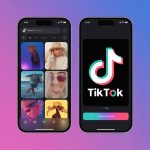Ad-Free Experience: No advertisements interrupting usage
Description
The Uninterrupted Horizon: Why the Ad-Free Experience is Reshaping the Digital Landscape
In the constant hum of our digital lives, a quiet revolution is gaining momentum. It’s a rebellion against the relentless barrage, the unexpected intrusions, the flashing banners, the auto-playing videos, and the pervasive feeling of being constantly sold to. It’s the rise of the Ad-Free Experience a conscious choice for digital serenity and a fundamental shift in how users engage with content and services. This isn’t just about convenience; it’s about reclaiming attention, respecting privacy, and demanding a higher quality of interaction. This article dives deep into the phenomenon of ad-free experiences, exploring their driving forces, the diverse paths to achieving them, the challenges involved, and their profound impact on users and the digital ecosystem.
The Ad Avalanche: Understanding the Status Quo
For decades, the dominant model for funding the “free” internet has been advertising. Websites, apps, search engines, social media platforms, and countless online services offered their content at no direct monetary cost to the user. In exchange, users “paid” with their attention and data, served up to advertisers. While this model fueled the explosive growth of the internet, its side effects have become increasingly burdensome:
- User Experience Degradation: Ads interrupt reading flow, slow down page loading times, consume mobile data, and can be visually jarring or even deceptive. Auto-playing video and audio ads are particularly notorious for their intrusiveness.
- Attention Fragmentation: The sheer volume and design of ads (bright colors, movement, urgency cues) are engineered to hijack attention, making deep focus and sustained engagement with actual content incredibly difficult.
- Privacy Concerns: Targeted advertising relies heavily on tracking user behavior across websites and apps, collecting vast amounts of personal data (browsing history, location, interests, demographics) often without explicit, fully informed consent. This raises significant privacy issues.
- Security Risks: Malvertising – the use of online ads to distribute malware – is a persistent threat. Users can inadvertently infect their devices simply by visiting a legitimate website hosting a compromised ad.
- Content Integrity: The pressure to generate ad revenue can influence editorial decisions, potentially leading to clickbait, sensationalism, or content designed purely to attract ad views rather than inform or engage meaningfully.
The cumulative effect is digital fatigue – a sense of exhaustion, frustration, and distrust fostered by the constant commercial onslaught.
The Unseen Ripples: Understanding Mod Waves and Their Impact on Our Tech-Driven World
In the invisible currents that permeate our modern existence – the radio signals connecting our phones, the Wi-Fi bathing our homes, the intricate communications of satellites – lies a complex phenomenon often operating behind the scenes: mod waves. While the term itself might sound like niche technical jargon, the principles it represents underpin virtually every wireless technology we rely on. This article delves deep into the world of mod waves, demystifying their nature, exploring their diverse applications, and addressing the growing desire for ad-free experiences in the digital landscapes they help create.

The Ad-Free Imperative: Why Users Are Choosing Out
Driven by this fatigue and empowered by new tools and options, users are actively seeking alternatives. The desire for an ad-free experience stems from core human needs:
- Regaining Control: Users want autonomy over their digital space. They want to decide what they see and when they see it, free from unsolicited interruptions.
- Preserving Focus & Productivity: Eliminating visual and auditory clutter allows for deeper immersion in content, whether it’s reading an article, watching a video, listening to music, or working online. This enhances comprehension, enjoyment, and efficiency.
- Protecting Privacy: Opting out of ad-supported models often significantly reduces tracking. Users increasingly value their data sovereignty and seek platforms that respect it by minimizing data collection, especially for advertising purposes.
- Enhancing Speed & Performance: Advertisements, especially complex ones with tracking scripts and videos, are resource hogs. Removing them dramatically improves page load times, reduces data usage (crucial for mobile users), and extends battery life.
- Improving Security: Reducing exposure to ad networks directly lowers the risk of encountering malicious ads and malware.
- Seeking Higher Quality: There’s a growing perception that ad-free platforms often invest more in the core quality of their content, service, or product, as their revenue depends directly on user satisfaction rather than advertiser appeasement.
Pathways to Purity: How Ad-Free Experiences Are Achieved
Achieving an ad-free experience isn’t monolithic; it comes in various forms, each with its own implications:
- Premium Subscriptions (The Direct Pay Model):
- How it Works: Users pay a recurring fee (monthly/yearly) to access content or services without advertisements. This is the most common model for major platforms shifting away from ads.
- Examples: Streaming services (Netflix, Disney+, Spotify Premium, YouTube Premium), news publications (The New York Times, The Washington Post, The Athletic), productivity software (Evernote Premium), email clients (Proton Mail paid tiers), niche communities/platforms.
- Pros: Provides sustainable revenue for creators/platforms, ensures the highest quality user experience (no ads, often additional features), respects privacy (less reliance on ad tracking).
- Cons: Creates a paywall barrier, potentially limiting access to information or services for those unable or unwilling to pay. Requires users to manage multiple subscriptions (“subscription fatigue”).
- Ad Blockers (The Technical Shield):
- How it Works: Software (browser extensions like uBlock Origin, AdGuard; standalone apps; or even DNS-level blockers like NextDNS/Pi-hole) that actively identifies and prevents advertisements from loading on web pages and sometimes within apps.
- Pros: Free for users, highly effective at removing most ads, improves speed/performance, enhances privacy by blocking trackers, customizable.
- Cons: Can break website functionality if not carefully managed, deprives content creators of ad revenue (ethical debate), requires technical know-how for advanced setups, faces increasing counter-measures from publishers (“ad blocker blockers”).
- Privacy-Focused Browsers & Search Engines:
- How it Works: Browsers like Brave (which has a built-in ad/tracker blocker and offers its own privacy-respecting ad ecosystem opt-in) or Firefox (with strong privacy settings) and search engines like DuckDuckGo prioritize blocking trackers and ads by default.
- Pros: Built-in protection, enhanced privacy, often faster browsing.
- Cons: May not block all ads as effectively as dedicated blockers, Brave’s model is unique and involves cryptocurrency.
- Open Source / Donation-Supported Models:
- How it Works: Platforms or creators rely on community support through donations (Patreon, Ko-fi, Open Collective) or grants, avoiding both ads and paywalls. Often seen with open-source software (funded by donations or enterprise support) and independent creators.
- Pros: Truly free for users, community-driven, fosters direct creator-user relationships, often highly transparent.
- Cons: Relies on user generosity, can be financially unstable for creators, less scalable for large platforms.
- Public Funding & Institutional Models:
- How it Works: Services funded by governments, universities, or non-profits (e.g., public broadcasting websites, academic journals, library resources).
- Pros: Free at point of use, mission-driven, avoids commercial pressures.
- Cons: Limited scope, dependent on public funding which can fluctuate.
- Decentralized Platforms (Web3/Nostr):
- How it Works: Emerging models built on blockchain or peer-to-peer protocols where monetization might occur through microtransactions (crypto) or direct user support, theoretically avoiding centralized ad networks.
- Pros: Potential for user control and privacy, resistance to censorship.
- Cons: Highly experimental, complex user experience, scalability and environmental concerns, volatile.
The Ripple Effect: Impact on Users, Creators, and the Ecosystem
The shift towards ad-free experiences is not happening in a vacuum. It has profound consequences:
- For Users:
- Positive: Enhanced well-being (reduced digital stress), improved productivity, stronger privacy, faster experiences, potentially higher-quality content.
- Negative: Potential for increased costs (subscriptions), fragmentation of access (paywalls), the burden of managing blockers or subscriptions.
- For Content Creators & Publishers:
- Challenge: Significant loss of traditional ad revenue, forcing a fundamental rethink of business models. Adapting requires investment in premium offerings, community building, or diversification.
- Opportunity: Building direct, sustainable relationships with audiences via subscriptions or donations. Freedom from advertiser pressure can lead to more authentic, higher-quality content. Reduced reliance on invasive tracking aligns with growing privacy regulations (GDPR, CCPA).
- For Advertisers & Ad Tech:
- Challenge: Reduced reach and effectiveness as ad blockers proliferate and users opt into walled gardens (subscription platforms). Increased pressure to justify ROI and respect privacy.
- Adaptation: Shifting budgets towards owned channels (brand websites/apps), influencer marketing (often within subscription platforms), contextual advertising (less reliant on tracking), and exploring opt-in, privacy-focused ad models (like Brave’s). Focusing on higher-quality, less intrusive ad formats (though effectiveness remains debated).
- For the Broader Digital Ecosystem:
- Sustainability: Questions about the long-term viability of purely ad-supported models for quality content. The subscription model faces challenges with saturation and fatigue.
- Quality vs. Accessibility: The tension between funding high-quality content/services and ensuring broad accessibility without paywalls.
- Privacy Evolution: The ad-free movement accelerates the push for stronger privacy regulations and norms, forcing all players to adapt.
- Innovation: Driving the development of new monetization strategies, user-centric platforms, and privacy-enhancing technologies.
Navigating the Challenges: Ethics, Accessibility, and Sustainability
The pursuit of ad-free experiences isn’t without its complexities:
- The Ethics of Ad Blocking: Is it fair to consume content while actively depriving the creator of their primary revenue source? This is a heated debate. Arguments center on user rights (to control their own browser/device, to protect privacy/security) vs. the need for content creators to earn a living. Some blockers offer “acceptable ads” programs or allow whitelisting of trusted sites.
- The Accessibility Problem: Paywalls inherently exclude users who cannot afford subscriptions. This risks creating a digital divide where quality information and services become privileges of the wealthy. Finding models that offer free or low-cost tiers with limited ads or features, or supporting public/community-funded alternatives, is crucial.
- Subscription Fatigue: As more services adopt premium models, users face an ever-growing list of monthly payments. This is unsustainable for many and leads to difficult choices, potentially limiting the model’s growth. Bundling services and offering flexible pricing tiers are potential mitigations.
- Ensuring Creator Viability: For independent creators and smaller publishers, transitioning away from ads is particularly challenging. Building a paying audience takes time and effort. Platforms that facilitate direct support (like Patreon) are vital, but success isn’t guaranteed.
- The “Free” Illusion: Truly free, high-quality, ad-free experiences are rare. Someone always pays – whether it’s the user (directly via subscription or indirectly via data/tracking), donors, or taxpayers. Transparency about costs and funding is essential.
The Future Uninterrupted: Where Do We Go From Here?
The demand for ad-free experiences is not a passing fad; it’s a fundamental shift in user expectations. The future likely holds a more diverse landscape:
- Hybrid Models Dominate: Expect more platforms offering free, ad-supported tiers alongside premium, ad-free subscriptions. This balances accessibility with sustainability.
- Focus on Value & Context: Advertising that persists will need to be demonstrably valuable, respectful, and contextually relevant. Intrusive formats will face even greater resistance. Privacy-by-design advertising will become mandatory.
- Innovation in Micropayments & Web3: While nascent, technologies enabling frictionless micro-payments for content consumption (bypassing subscriptions) or decentralized funding models could emerge as alternatives, though significant hurdles remain.
- Enhanced User Control: Platforms will increasingly offer users granular control over their ad experience (types of ads, frequency) and data sharing, even within free tiers, to meet regulatory and user demands.
- Rise of Privacy as a Premium Feature: Ad-free will be intrinsically linked with strong privacy guarantees, making it a key selling point beyond just the absence of ads.
- Regulation as a Catalyst: Ongoing global privacy regulations will continue to restrict tracking-based advertising, inadvertently pushing more platforms towards subscription or first-party data models.
Conclusion: Reclaiming the Digital Commons
The quest for an ad-free experience is more than just a desire to avoid annoying pop-ups; it’s a collective assertion of user agency in the digital age. It’s a demand for respect – respect for our attention, our time, our privacy, and our right to a focused and enjoyable online experience. While challenges around funding, accessibility, and ethics remain, the momentum is undeniable.
The future internet won’t be entirely ad-free, nor should it necessarily be. Advertising, when ethical, transparent, and non-intrusive, can still play a role in discovery. However, the hegemony of the invasive, tracking-based ad model is crumbling. Users are voting with their wallets (for subscriptions), their browsers (with ad blockers), and their choices (opting for privacy-focused services).
The result will be a richer, more diverse digital ecosystem where quality, user respect, and sustainable funding models take precedence. It’s a future where the value exchange between user and provider is clearer, fairer, and ultimately, more human. The uninterrupted horizon beckons – a digital space where we can truly engage, create, and connect, free from the constant noise of the sales pitch. The journey towards that horizon is well underway.
Frequently Asked Questions (FAQs) About Ad-Free Experiences
- What exactly is an “ad-free experience”?
An ad-free experience means interacting with a digital platform (website, app, service) without encountering any third-party advertisements. This includes banners, pop-ups, pre/mid/post-roll video ads, sponsored content designed to look like regular content, and audio ads. The content or service is presented cleanly, solely focused on its intended purpose. - Why are ad-free experiences becoming so popular?
Popularity is driven by user frustration with intrusive, slow-loading, and privacy-invasive ads. People want faster browsing, better focus, stronger privacy protection (less tracking), improved security (avoiding malware), and a generally calmer, less commercialized online environment. - How can I get an ad-free experience?
There are several main ways:- Subscribe: Pay for premium tiers of streaming services, news sites, music apps, productivity tools, etc.
- Use Ad Blockers: Install browser extensions (uBlock Origin, AdGuard) or system-wide blockers (Pi-hole, NextDNS).
- Choose Privacy Tools: Use browsers like Brave or Firefox with strict privacy settings, and search engines like DuckDuckGo.
- Support Donation Models: Use platforms funded by donations or patron support (e.g., via Patreon).
- Utilize Public Resources: Access ad-free services from libraries, universities, or government institutions.
- Is using an ad blocker unethical?
This is debated. Proponents argue users have the right to control their devices, protect privacy/security, and reject intrusive experiences. Opponents argue it deprives websites (especially smaller ones) of vital revenue earned by hosting ads. Some users compromise by whitelisting sites they value and support. - Do ad-free subscriptions cost more in the long run than seeing ads?
It depends. While subscriptions cost money, seeing “free” ads has hidden costs: wasted time, mental energy (decision fatigue), potential privacy loss (your data being sold), increased mobile data usage, slower devices, and security risks. Subscriptions consolidate costs for a guaranteed enhanced experience and privacy. - What about “subscription fatigue”?
Subscription fatigue is real – the feeling of being overwhelmed by too many monthly payments. To manage it:- Audit your subscriptions regularly and cancel unused ones.
- Prioritize services you use most.
- Look for annual payment discounts (but only if you’re sure you’ll use it).
- Consider sharing family plans where allowed.
- Support free, donation-based alternatives where feasible.
- How do free services survive without ads?
Truly free, high-quality, and ad-free services are rare. They typically rely on:- Donations/Grants: Community support or institutional funding.
- Open Source with Commercial Support: Free core software funded by paid enterprise features or support.
- Freemium Models: Offering a basic free tier (sometimes with minimal, non-intrusive ads or limitations) to entice users towards paid premium tiers. Someone always pays – the user, donors, taxpayers, or enterprise customers.
- Does going ad-free improve my online security?
Yes, significantly. Malvertising (malicious ads) is a major attack vector. By blocking ads, you drastically reduce your exposure to this risk. Ad blockers also block many tracking scripts that can be exploited by attackers. - Will all websites eventually go ad-free?
No, it’s unlikely. Advertising will persist, especially for platforms targeting broad audiences where subscription models are impractical. However, expect more sites to offer ad-free options (via subscriptions) alongside free ad-supported tiers, and for intrusive ad formats to decline due to user pressure and regulation. The default experience may become less ad-heavy. - What’s the future of advertising if ad-free grows?
Advertising will need to adapt:- Focus on Value & Context: Ads must be genuinely useful or entertaining and contextually relevant without relying on creepy tracking.
- Privacy-First: Comply with regulations and user expectations by using less intrusive targeting methods (e.g., contextual, cohort-based).
- Embrace New Formats: Explore non-intrusive, high-quality formats within platforms where users opt-in (e.g., sponsored content clearly labeled on premium platforms, creator sponsorships).
- Shift Budgets: More investment in owned channels (brand websites/apps), influencer marketing, and experiential marketing.
The ad-free movement isn’t about eliminating advertising entirely, but about forcing it to evolve into something more respectful, less intrusive, and genuinely valuable within a digital landscape that prioritizes user experience and privacy.





